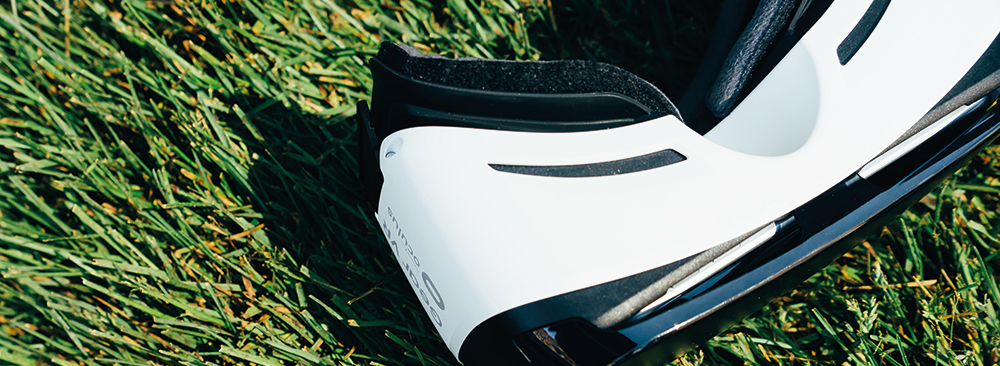News
#hashtagat10 – What Next for the Social Media Landscape?
The humble hashtag changed the world when it was introduced to Twitter in 2007. Ten years on, how might the social media landscape change next?
Let’s face it – it’s almost impossible to imagine a digital marketing campaign without a hashtag. But before 2007, they didn’t exist, and even upon their introduction to Twitter, it was impossible to see just how far they’d change the way social media works.
Now, hashtags are everywhere – they’re an integral part of Instagram, Tumblr wouldn’t be the same without them and even Facebook joined in the fun a few years ago. They’re perfect for connecting conversations, promoting big events, and even injecting a bit of humour into a post.
But what new innovations might we see grace our phone screens over the next 10 years? And will any of them have as great an impact as the hashtag?
Live, live, live
Live broadcasts on social media have been around for a little while now, but they’re only set to get bigger. Facebook Live is now the go-to stream of choice for most events, but it’s even seeing wider applications as a TV hub – several film studios have recently taken to streaming classics from their back catalogue with a ‘movie night club’ approach, where people can tune into the Facebook live feed and chat alongside the film.
Could we soon see primetime favourites, like The Great British Bake Off, The X Factor or even Coronation Street, making their way onto Facebook to air at the same time as on the telly? Only time will tell, but given the interactive nature of the Facebook Live feed, we’re betting it’s a strong possibility.
Chatbots on the rise
Another innovation that’s not quite there yet, chatbots don’t seem to have really hit the mainstream at the moment. Although it’s completely possible to order a pizza over Facebook Messenger, there seems to be some reluctance for people to really take up on it.
However, chatbots may well become a huge part of the social media landscape over the next ten years, allowing people to shop and seek advice. Although a big focus has been on food so far, we think that chatbots could have a much bigger application for medicine, expanding services like NHS Direct, or for government bodies, allowing people to ask questions about registering to vote, look up information on their representatives (something that Singapore is already doing) or even find out when their car tax is due.
VR becoming vital
So far, VR hasn’t made a huge splash in the realm of social media. It’s not surprising, considering the cost of most dedicated VR headsets. However, once VR technology becomes more affordable, social media will surely become a focal part of the experience.
Take a second to imagine we’re in the VR future, where all kinds of social media experiences are available. Although being surrounded by your news feed and being able to pull interactive videos up with a flick of your wrist does sound pretty cool, it’s in video chat that we think VR will become a really big deal. Being in the same virtual space as a full representative of your friends, or, if you’re a business, your clients, will facilitate international connectivity like never before. That is, if you can get the Wi-Fi to play ball.
Greater individualisation
It’s going to get tougher and tougher for brands to make an impact if we continue to see social media algorithms at work. The more personalised feeds become, the more impossible it will be for new brands to break through. Therefore, paid media – which is already a greater priority for most brands than organic posts – will become necessary, and there will be even more reliance on influencer marketing to reinforce the message and get the point across.
Everything in one place
In 10 years’ time, we reckon you’ll be able to do your weekly shop, chat to your friends, pay for your coffee and make an appointment to get your hair cut – all without actually leaving Facebook. At present, whenever you click on a link using the Facebook app, you technically stay within its framework so it’s easy to jump back to the app. The precedent’s therefore been set, and with the amount of time we all spend on social networks, it’d make sense for social leaders to try and bring everything under one roof.
Social media that responds to your feelings
Feeling glum while you scroll through your timeline? Wouldn’t it be nice to see some cute puppy videos? If you’re lucky, you might spot one – but in the future, could a social network show you the kind of content it thinks you need to see based on your emotion?
We already know that Facebook’s experimented with targeting people with certain ads based on the emotions it reads from their posts. However, as technology advances, it’s not outside the realms of possibility to see sites actively reading your emotions – via your photos and their metadata, the types of posts you make and at what time, or by analysing your videos. So, on a Friday, when it’s been a busy week, we won’t be mad if Twitter orders a pizza for us – just make it a large pepperoni …
Need help to be the next big name on social?
Whether you need to train your people on how to use social media to your advantage, or want to make a splash with a specialised creative campaign, our social experts have been there, done that and are hungry for whatever challenge you’ve got. To find out more, give us a call on 01242 235 000 or submit an enquiry.
Found this helpful? Sign up for our newsletter!
Our monthly newsletter brings together the best of our blogs, work and news in one handy email. Why not sign up today to find out more about all things social media, PR, design and digital?



